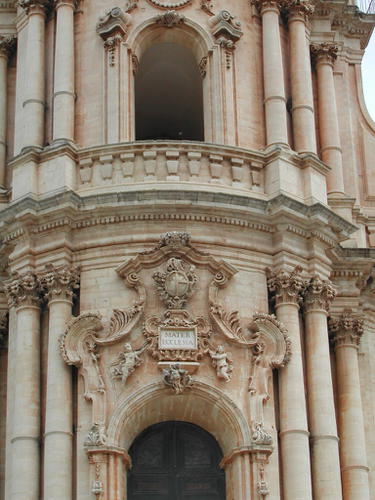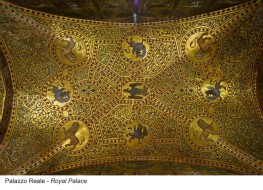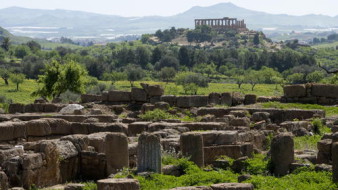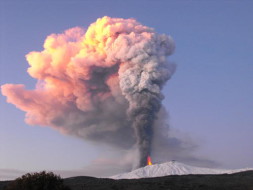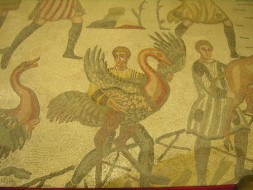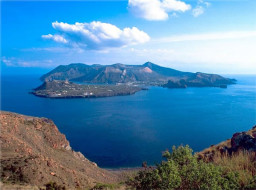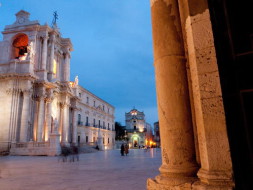© UNESCO, Author: Francesco Bandarin

Anno di iscrizione nella World Heritage List:
2002
Ubicazione:
Val di Noto (CT, SR, RG) – Sicilia N3635.5 E1548.1
Documento Unesco:
ICOMOS N. 1024rev
Area del sito: 113 ettari
Buffer zone: 306 ettari
The eight towns in south-eastern Sicily: Caltagirone, Militello Val di Catania, Catania, Modica, Noto, Palazzolo, Ragusa and Scicli, were all rebuilt after 1693 on or beside towns existing at the time of the earthquake which took place in that year. They represent a considerable collective undertaking, successfully carried out at a high level of architectural and artistic achievement. Keeping within the late Baroque style of the day, they also depict distinctive innovations in town planning and urban building.
Justification for Inscription
Criterion (i): This group of towns in south-eastern Sicily provides outstanding testimony to the exuberant genius of late Baroque art and architecture.
Criterion (ii): The towns of the Val di Noto represent the culmination and final flowering of Baroque art in Europe.
Criterion (iv): The exceptional quality of the late Baroque art and architecture in the Val di Noto lies in its geographical and chronological homogeneity, as well as its quantity, the result of the 1693 earthquake in this region.
Criterion (v): The eight towns of south-eastern Sicily that make up this nomination, which are characteristic of the settlement pattern and urban form of this region, are permanently at risk from earthquakes and eruptions of Mount Etna.
Long Description
This group of towns in south-eastern Sicily represents the culmination and final flowering of Baroque art in Europe. The exceptional quality of the late Baroque art and architecture in the Val di Noto lies in its geographical and chronological homogeneity, as well as its quantity, the result of the 1693 earthquake in this region. The towns were all in existence in medieval times, characteristically around a castle and with monastic foundations. Most seem to have been changing during the 16th and 17th centuries and then been affected differentially by the 1693 earthquake.
Caltagirone is significant for its multifaceted town planning and architectural facades, and for its unusual link between the pre- and post-1693 periods. Its rich architecture exists inside an urban context resulting from the configuration of the site. The most important buildings include the churches of Santa Maria del Monte, St James the Apostle, St Joseph, St Dominic, the Holy Saviour, St Chiara and St Rita, Jesus, St Stephen, and St Francis of Assisi and, among secular buildings, the Corte Capitanale, Civic Museum, former Pawnshop, and San Francesco Bridge.
Militello Val di Catania is significant for its wealth of architecture from the 14th century onwards, and for the outstanding 17th-century walled pre-earthquake town plan which was in the vanguard of Sicilian feudal towns and was then faithfully followed in the late Baroque reconstruction. Principal buildings include the churches of San Nicolò and Santa Maria della Stella, the latter completed in 1741 on the site of St Anthony the Abbot and the former in the San Leonardo area.
Catania acquired a particular quality of urban design when it was rebuilt on a comprehensive, geometric unitary plan amid the rubble of the destroyed city. At its core are the outstanding Piazza del Duomo and the Via dei Crociferi, together with the nearby Badia de Sant’Agata, Collegiata, Benedictine monastery, and Palazzo Biscari.
Modica consists of two urban centres, the older perched on the rocky top of the southern Ibeli hill, the other rebuilt further downhill after the 1693 earthquake with imposing and conspicuous urban monuments such as the Cathedral of St George and the Church of St Peter.
Noto is on two levels, an upper part on the plateau and a lower, newer part on the slope below. The latter accommodates the buildings of the nobility and the religious complexes of the 18th century, the topography, town plan and architecture combining to create a spectacular ‘Baroque stage set’. It includes nine religious complexes and numerous palazzi.
Palazzolo has two centres, the medieval one on which a new town was reconstructed on the old site but along a new axis, and a post-1693 ‘new town’ developed along a crescent up to the earliest site of all, the Greek Akrai. The two churches of St Sebastian and Saints Peter and Paul were largely rebuilt after 1693, the latter the centre of the old nobility, the former marking the quarter of the new urban classes.
Ragusa, the ancient Ibla, is built over three hills separated by a deep valley. It, too, consists of two centres, one rebuilt on the old medieval layout and the other, Upper Ragusa, newly built after 1693. It contains nine major churches and seven major palazzi, all Baroque.
In Scicli the Via Francesco Mormina Penna stretches to the nearby Beneventano palace, perhaps the only one in Sicily to display fantastic decoration, in an urban setting where churches rise alongside patrician buildings of late Baroque age. Three churches (St John the Evangelist, St Michael and St Teresa) are from the 18th century.
Source: UNESCO/CLT/WHC
Historical Description
Some of the nominated towns (Caltagirone, Mitello) were of pre-medieval origin, and all were in existence in medieval times, characteristically around a castle and with monastic foundations. Most seem to have been changing during the 16th and 17th centuries and then been affected differentially by the 1693 earthquake, which resulted in some 93,000 casualties. Catania, for example, was destroyed, as was Noto on top of Mount Alveria, whereas Mitello was partially destroyed and Ragusa seriously damaged. Reactions to the earthquake also differed, ranging from Catania’s complete rebuild on the same site, through Mitello’s partial abandonment and Ragusa’s combination of new and old, to Noto’s complete rebuild on a new site. All the towns saw considerable building activity through the 18th century, notably of churches, large public buildings, and palazzi. Another serious earthquake in 1990 affected some parts of some towns, Ragusa in particular. The nomination is almost entirely based on 18th century urban art and architecture and says nothing about urban economy or urban/rural relationships.
Source: Advisory Body Evaluation
Piano gestione
1. Le città tardo barocche del val di Noto 2. Le città tardo barocche del val di Noto 3. Le città tardo barocche del val di Noto 4. Le città tardo barocche del val di Noto 5. Le città tardo barocche del val di Noto 6. Le città tardo barocche del val di Noto 8. Le città tardo barocche del val di Noto 9. Le città tardo barocche del val di Noto 10. Le città tardo barocche del val di Noto 11. Le città tardo barocche del val di Noto 12. Le città tardo barocche del val di Noto 13. Le città tardo barocche del val di Noto 14 .appendice Le città tardo barocche del val di Noto 15.appendice Le città tardo barocche del val di Noto 16. appendice Le città tardo barocche del val di Noto


